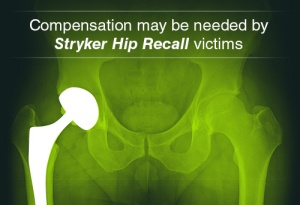 In 2008, metal-on-metal (MoM) hip replacement patients aired concerns about the potential risks associated with the implant, online sources say. Surgery-bound men and women found out that MoM hips wear out at an accelerated rate, according to an article at Orthopedics.about.com/od/hipkneeimplants/p/metal-hip-replacements.htm. MoM hip implants are designed to work more effectively and to last longer than other hip implant materials. These implants are found to be associated with unique health complications. People have the tendency to go after the latest model of hip replacement implants, believing that it may be better than the previous models. In fact, there are a growing number of lawsuits in the US filed against MoM manufacturers.
In 2008, metal-on-metal (MoM) hip replacement patients aired concerns about the potential risks associated with the implant, online sources say. Surgery-bound men and women found out that MoM hips wear out at an accelerated rate, according to an article at Orthopedics.about.com/od/hipkneeimplants/p/metal-hip-replacements.htm. MoM hip implants are designed to work more effectively and to last longer than other hip implant materials. These implants are found to be associated with unique health complications. People have the tendency to go after the latest model of hip replacement implants, believing that it may be better than the previous models. In fact, there are a growing number of lawsuits in the US filed against MoM manufacturers.
MoM hip replacement implants have become popular despite negative reports. There are millions of MoM hip patients who are at risk of exposing themselves with dangerously high levels of metal, a condition known as metallosis. This condition arises due to the friction between the two metallic surfaces of the ball-and-socket. These metallic particles may potentially cause inflammation on the soft tissues and bones surrounding the implant. There have been a small number of cases in which toxic chromium and cobalt ions have leaked into the lymph nodes, liver and kidneys before leaving the body as urine.
Because of these unfortunate events, MoM patients are advised to undergo annual blood examination to monitor the level of metal particles in their blood. It is also recommended to MoM patients to pay close attention on their general health, including the new or worsening symptoms outside their hips. The FDA is recommending that asymptomatic patients with MoM hip implants continue to follow-up with their orthopaedic surgeon every one to two years to monitor for early signs of change in hip status.
One popular brand of MoM hip implants is Stryker. It keeps two known products, Rejuvenate and ABG II, which have been very controversial. These products were marketed to provide increased stability, better movement, and superior fit over other hip replacement products available in the market. However, these hip implants have been recalled due to dangerous health complications. Because of these concerns, these implants should be closely monitored to watch for potential problem. You may visit this website about Stryker Rejuvenate Modular hip replacement recall for more related information.
References:
- orthopedics.about.com/od/hipkneeimplants/p/metal-hip-replacements.htm
- medicalnewstoday.com/articles/247151.php
- guardian.co.uk/society/2012/feb/28/hip-replacement-joints-scare-metal
- fda.gov/Medicaldevices/productsandmedicalprocedures/implantsandprosthetics/metalonmetalhipimplants/ucm241604.htm
- dailymail.co.uk/health/article-2004218/Thousands-hip-op-patients-fear-poisoned-metal-prosthetics.html


Recent Comments